Two months after my meeting with Eric Schmidt, WikiLeaks had a legal reason to call Hilary Clinton and to document that we were calling her. It’s interesting that if you call the front desk of the State Department and ask for Hillary Clinton, you can actually get pretty close, and we’ve become quite good at this.
Anyone who has seen Doctor Strangelove may remember the fantastic scene when Peter Sellers calls the White House from a payphone on the army base and is put on hold as his call gradually moves through the levels. Well WikiLeaks journalist Sarah Harrison, pretending to be my PA, put through our call to the State Department, and like Peter Sellers we started moving through the levels, and eventually we got up to Hillary Clinton’s senior legal advisor, who said that we would be called back.
Shortly afterwards another one of our people, WikiLeaks’ ambassador Joseph Farrell, received a call back, not from the State Department, but from Lisa Shields, the then girlfriend of Eric Schmidt, who does not formally work for the US State Department. So let’s reprise this situation: The Chairman of Google’s girlfriend was being used as a back channel for Hillary Clinton. This is illustrative. It shows that at this level of US society, as in other corporate states, it is all musical chairs.
That visit from Google while I was under house arrest was, as it turns out, an unofficial visit from the State Department. Just consider the people who accompanied Schmidt on that visit: his girlfriend Lisa Shields, Vice President for Communications at the CFR; Scott Malcolmson, former senior State Department advisor; and Jared Cohen, advisor to both Hillary Clinton and Condoleezza Rice, a kind of Generation Y Kissinger figure — a noisy Quiet American as the author Graham Greene might have put it.
Monthly Archives: August 2013
Generation Y & Cars
A group of Generation Y members surveyed who had bought a vehicle within three months said they visited on average 3.1 dealerships before buying vs. 2.5 visits for the slightly older Gen Xers and 1.9 for older-still baby boomers.
Helms said millennials tend to be thorough with online and in-store vehicle research, making trips to dealerships a key part of the shopping journey.
But after the experience, they said they were much more likely than their older counterparts to avoid interacting with salespeople in the future for fear of high-pressure sales tactics. Fifty-six percent said so vs. 49 percent for Gen Xers and 37 percent for baby boomers.
Helms said millennials head to dealerships thinking they’ll have a laidback Apple Store experience and end up not wanting to go back. “That reflects their dealership experience,” Helms said.
Read the Deloitte Gen Y survey here (PDF).
EXCLUSIVE: Google Designing Its Own Self-Driving Car, Considers ‘Robo Taxi’
Google Inc., which has been working on software to help major automakers build self-driving cars, also is quietly going around them by designing and developing a full-fledged self-driving car, according to people familiar with the matter.
In recent months, Google has held talks with contract manufacturers to build new cars to Google’s specifications, said the people familiar with the matter. The move came after Google’s talks with big car brands about incorporating its technology into their vehicles failed to yield a partnership, one of these people said.
Google also has a novel idea for what it could do with these cars. The company has considered ways to sell self-driving vehicles to individuals. But it also has focused on the potential for an autonomous car it designs to become part of “robo-taxi” services that pick up passengers on demand, these people said. Whether Google would try to operate such services on its own is unclear.
Via Andy Assareh.
The case against the annual checkup
Today, approximately 177,000 Americans will visit a doctor, even though they have absolutely no symptoms. There is no standardized procedure for the annual health exam. Some doctors limit themselves to a brief interview and a once-over with the stethoscope. Others add-on some useful, or at least arguably useful, preventive health procedures like mammograms, cholesterol checks, and prostate-specific antigen tests. Many order a series of laboratory tests that are unnecessary and often counterproductive in healthy adults, like a complete blood count or urinalysis.
The annual health exam is a venerable tradition, stretching back to the late 19th century—those heady days of medicine when doctors overestimated their own ability to cure disease, and badly underestimated their tendency to cause it. We’re now in the evidence-based era of medicine, and there’s little evidence that annual exams provide any benefit. So here’s a free bit of advice: If you’re not sick, don’t go to the doctor.
Thoughts on Ford’s OPENXC
Ford has created a platform called OpenXC that opens APIs into 50 or so data streams coming out of your car. On the first day of Ingenuity, teams of makers, hackers, and regular folks came up with amazing ideas that leveraged Ford’s innovative platform. For example, one team built an app that senses when a pet or child is in your car, then monitors the car’s internal temperature. If it gets too hot, this app can lower the windows, turn on the AC, and text the car’s owner. I mean, how cool is that?!
Boing Boing’s editors presented the winners on stage on Sunday during Ingenuity, a day long celebration of, well, the weird and wonderful people and ideas that make Boing Boing, Boing Boing. There was a hack that turned driving data into music – if you drive aggressively and waste resources, the music gets aggravating. If you drive well, it gets soothing. Another hack interpreted braking, steering, and other information into new signals for other drivers – imagine a taillight flashing “Thank you!’ when someone lets you merge into oncoming traffic, for example. Yet another hack took all that data and turned it into a “cost per trip” dashboard that gamifies driving and encourages you to drive in a way that saves money.
These kinds of innovations can only occur in an ecosystem of openness. As our society tips toward one based on data, our collective decisions around how that data can be used will determine what kind of a culture we live in. And what I observed at Ingenuity strengthened my belief that companies that lean into an open approach to data will win. There will soon be streams of data coming from all manner of products – appliances, clothing, sporting goods, you name it. Wouldn’t you rather live in a world where you can export the data from your son’s football helmet to a new app that monitors force and impact against a cohort of high school players around the country? Or would a better world be one where Riddell Inc. owns and controls that data?
Way back in 2008 I wrote a piece about Facebook and data called It’s Time For Services on The Web to Compete On More Than Data. My point was this: winning on a strategy of data lockdown is a short-term play. What matters is the service you provide on top of that data. For companies like Ford, the key won’t be to lock in customer data and try to be the best at leveraging your proprietary insights. It’ll be allowing your customers to take that data out, remix it into a robust ecosystem, and feed it back to your company and products, so they can get better. Companies will compete on how they best leverage a customer’s data, not on whether or not they’ve locked those customers’ data assets in (are you listening, cable companies?!).
Ford’s OpenXC website.
Leaving on a Jet Plane
In an era when going through airport security demands a level of intimacy that would ordinarily require several dinner dates, it’s mildly shocking to realize that security measures were once so lax that for a brief period of time, the American skies served as a playground for an aerial version of Grand Theft Auto. As Wired contributing editor Brendan Koerner details in The Skies Belong to Us, over an 11-year period from 1961 to 1972, 159 commercial airlines were hijacked across the U.S., sometimes as frequently as twice a week. (On especially exciting days, two separate hijackings might even happen simultaneously.) The identities of the skyjackers, as the New York Daily Mirror dubbed them, were diverse: from former mental patients to wealthy white heiresses to radical Marxists. They were seen as something between outlaws and heroes, latter-day pirates propelled by the loss of late-sixties idealism and aided by the airline industry’s reticence to impose strict—or any—security measures. (Airlines feared it would cost them customers; the government more or less acquiesced.) The Skies Belong to Us takes readers through this heady age via two of its more successful protagonists, but before getting to them, allow me a quick survey of the period’s highlights.
Excepting a bizarre incident in 1954 in which a “giant teenager” unsuccessfully attempted to hijack an American Airlines flight, the threat of skyjacking was so far off the government’s radar in the late fifties that it forgot to make hijacking a crime when it passed the Federal Aviation Law in 1958. The first wave of hijackings began in the spring of 1961, when a deranged Miami electrician diverted a flight from Key West to Cuba in order to warn Castro about a fictitious assassination attempt. The man was arrested upon arrival, the passengers were treated to lunch in Havana, and the flight was delayed by three hours before landing safely in Key West.
A Destination Dinner
Turning the GTI south, over the lush hills south of Madison, past Paoli, near the New Glarus Brewery, Monroe’s gruyere and meandering via country roads into Monticello has its rewards.
First, there’s God’s handiwork so evident on an August evening. A corn crop that appears to be epic, gorgeous hay and soybean fields along with plenty of country miles to be carved by the GTI.
Ah, the destination – the point of the journey. That would be Monticello’s seventeen year young Dining Room.

Lack of planning did not doom our outing. I called to inquire about a table for two on a recent Saturday evening. 7:15? “We can do that but you’ll have to sit at a table adjacent to the bar”. Done.
That table, well served by a veteran waiter, made easy conversation with one of the bartenders (who happened to be a one of the owners). I mentioned that we had been before, one month after it opened and a few times over the years. It has been too long since our last visit.
The food was as remembered: delicious and a great value. A satisfying salad and fresh vegetables accompanied the pork roast and beef tenderloin on our table.
Perhaps most impressive, was the establishment’s “cadence”. The operations expertise was particularly evident when the dining room was full and our entrees arrived at the right time and proper temperature. I mentioned this to one of the proprietors. She said that her husband – the chef – insists that the food is delivered immediately when the correct temperature is observed.
I first noticed the essence of a restaurant’s cadence at La vie est belle six summers ago. Is it still there? Yes, thankfully. Who could forget the farmer delivering a slab of beef as we considered the menu? Nancy enjoyed beef carpaccio that evening.
The chef and his assistant did it all. Menu, drinks, cook, clean and forage. Fabulous. We learned of La vie est belle and Chat Plume via the excellent Le Blanc Manger. (a journey made possible by my generous parents!)
Heady company indeed. These memories and more streamed back while we finished a luscious dinner and conversation at Monticello’s Dining Room. Highly recommended.

Two Porsches: White & Blue
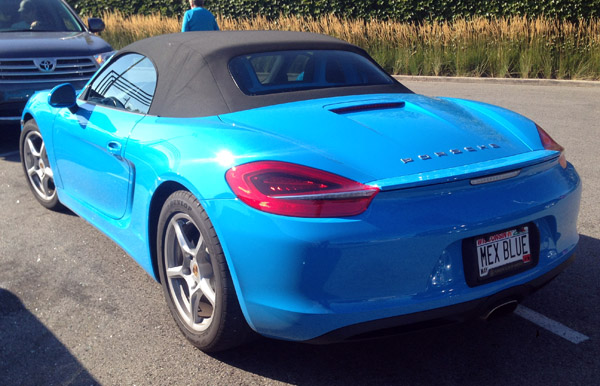
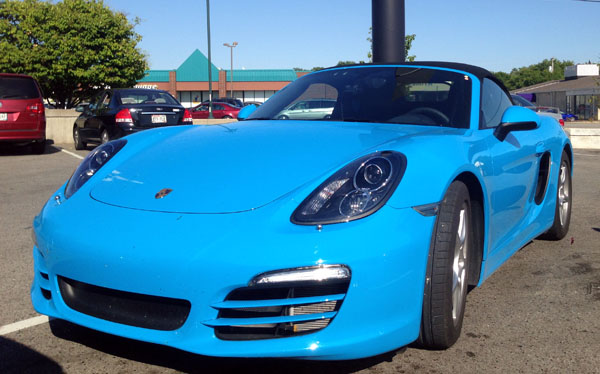

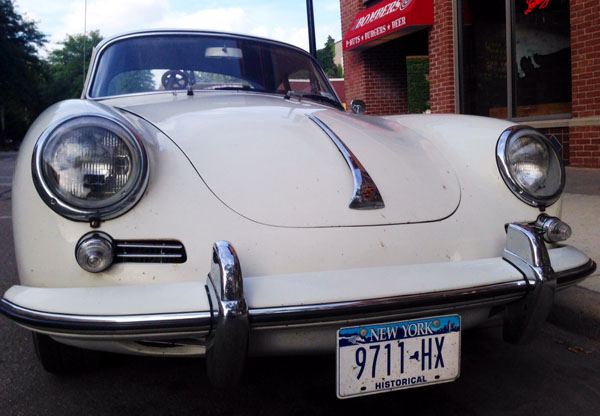
Ford GT: Blazing Red
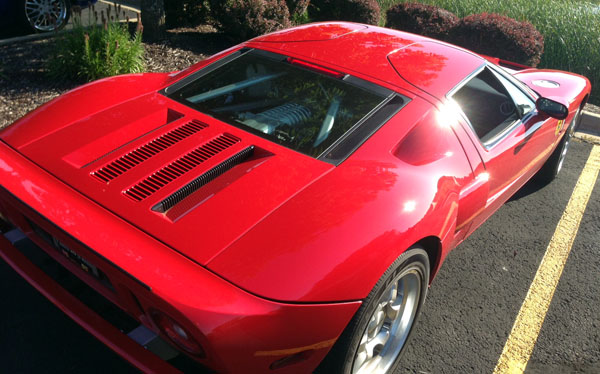
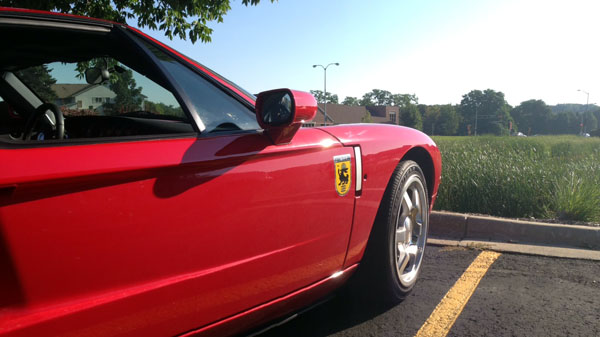
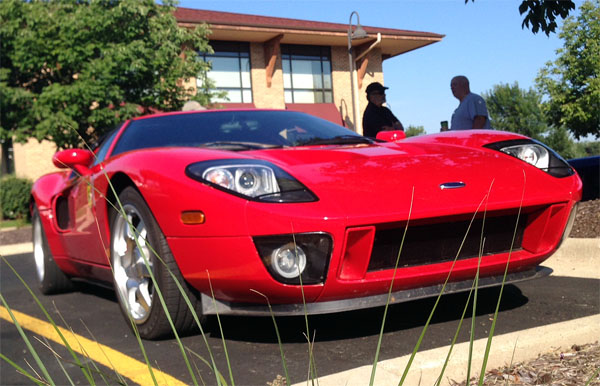
A “statement car” from Ford, produced from 2004 to 2006 and inspired by the all conquering GT40.
Shopping for one of the 4,038 produced? Bring $ix figures.
Bradley GT Electric Car Encounter
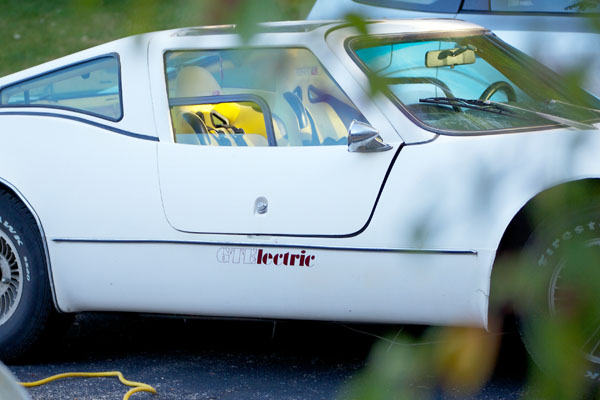
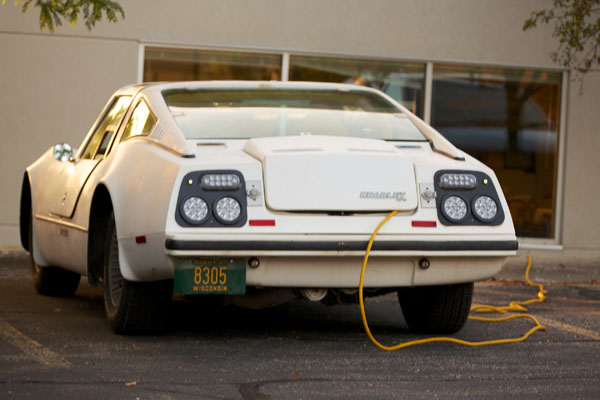
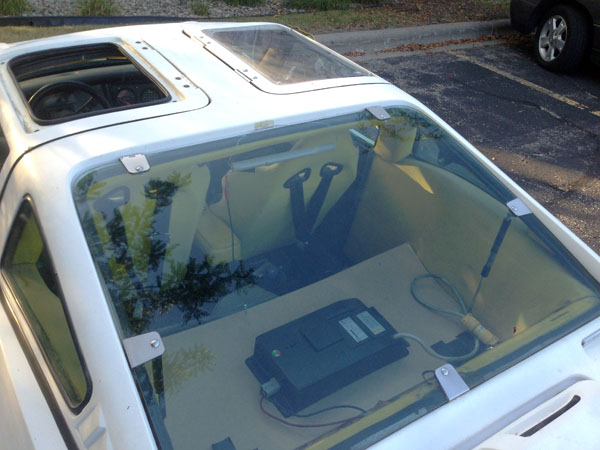
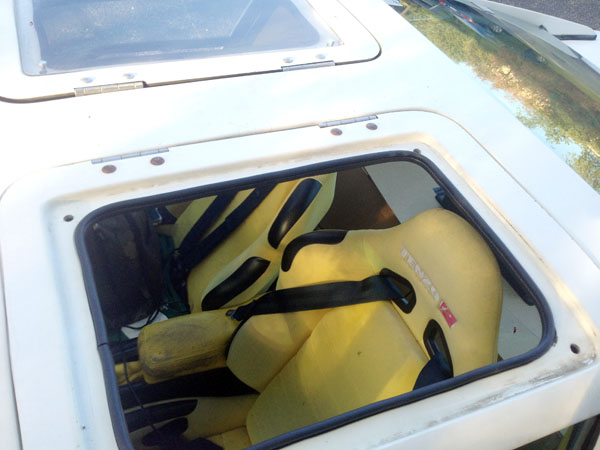
On our way to a glorious outdoor concert recently, I parked next to the obscure Bradley GT electric kit car.
A timely reminder that electric cars have had a few stops and starts over the decades.
Bradley Automotive via wikipedia:
The production run of the Bradley GT was from 1971 to 1981 according to the BradleyGT.com website and owners of the last GT II vehicles to be produced although many of the parts for the vehicles may date back to Volkswagens, Chevy Corvairs and other vehicles from the 1960s.